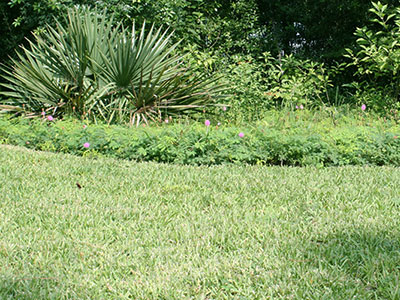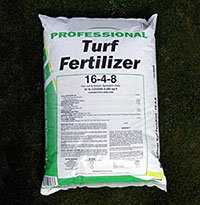Fertilizing Your Florida Lawn

When to fertilize your lawn depends on a few factors, but the biggest consideration is to fertilize only when your lawn is actively growing. In South Florida, turfgrass grows year-round, while in North and Central Florida, it grows from about April through September.
The maintenance plan you choose also influences when to fertilize. If you choose a higher-maintenance plan, you’ll fertilize more often during the growing season, while a basic plan will require fewer applications.
In Florida, many cities, counties, and communities have fertilizer ordinances. Keep in mind that these ordinances vary depending on where you live. The Florida-Friendly Landscaping™ Program developed the free Florida Fertilizer Ordinances web app that allows you to enter your location and see the ordinances that apply to you. The experts at your county Extension office can assist you with finding and interpreting the ordinances as well.
Calculating the Amount
Applying too much fertilizer can harm your lawn and the environment. So how do you calculate the right amount to apply?
The most important part of the calculation is finding the square footage of your lawn. You can measure it yourself or look at your property survey. You should apply no more than one pound of nitrogen for every 1000 square feet of turf, regardless of which type of grass you’re growing or where you live in the state.
If you’ve completed a soil test, then you already know how much fertilizer to use! We always recommend testing before fertilizing to ensure that you’re only applying what your soil is lacking. The results of your soil test will tell you which type of fertilizer to purchase and how much to use. Check out our article on soil testing to learn how to order one.
If you are proceeding without a soil test, then your next step is to identify which type of grass you have. Different grasses have different fertility needs, so this is important.
Then you need to select the right fertilizer. Only fertilizers that are intended for turf should be used, as fertilizers for flower or vegetable gardens have a different composition. Check the package to make sure the nitrogen content is primarily slow release. Slow release is better because it reduces the chance of burning your lawn and gives it a steady release of nutrients over time. This is especially important in Florida, where our seasonal rains can cause fertilizer to leach.
Little to no phosphorus content is ideal as well. Most Florida soils already contain enough phosphorus, so adding more is unnecessary. Although this is rare, you’ll know if your lawn needs a phosphorus application because it will grow slower, and lower leaves will turn purple. Complete a soil test before applying phosphorus to confirm your suspicion.
Now that you’ve identified which fertilizer to use, you need to apply the correct quantity. View Table 1 within the EDIS publication “Homeowner Best Management Practices for the Home Lawn“ to identify how much fertilizer to apply based on your lawn size.
Here are some considerations to keep in mind as you are fertilizing:
- As mentioned previously, only fertilize during your lawn’s growing season. If you fertilize outside of this window, your grass is less likely to absorb the nutrients and they could potentially leach into nearby water bodies.
- If you are fertilizing next to a sidewalk or pavement, use a deflector shield on your spreader to contain the fertilizer to your lawn. Also follow this technique if you are fertilizing next to a body of water, and leave a 10-foot strip on the water’s edge unfertilized as an extra precaution.
- Sweep up any spilled fertilizer instead of rinsing it away, even if you spill on the lawn.
- Store unused fertilizer in a dry place away from pesticides, fuel, or solvents.
- After applying fertilizer, irrigate just long enough to rinse fertilizer off the blades of grass and into the soil for the plant to take up. Moistening the top ½ inch of soil is enough.
- If your turfgrass is newly planted, wait at least 30-60 days after planting to apply fertilizer. This gives time for roots to establish first.
- Don’t fertilize if heavy rains are likely within 24 hours. Storms or flooding will wash away fertilizer before your lawn has a chance to use it.

If you have questions at any point during this process, the folks at your county Extension office can assist. They can help you calculate how much fertilizer to apply and tell you when you should apply it.
“Greening” Your Lawn
We all like a rich, dark-green lawn, but in the summer, grasses like St. Augustinegrass, bahiagrass, and centipedegrass can fade to a lighter green. It’s caused not by heat or a need for water, but a lack of nitrogen. However, fertilization with nitrogen in the middle of the summer is not always desirable (or even possible because of fertilizer ordinances) since this can encourage disease and insect problems.
So for a greener lawn this summer, consider applying iron sulfate or chelated iron to your lawn instead of a complete fertilizer. They may give you the dark green color you desire without stimulating growth. These products come in liquid and granular forms and are both easy to apply. Of course, be sure to follow label instructions.
